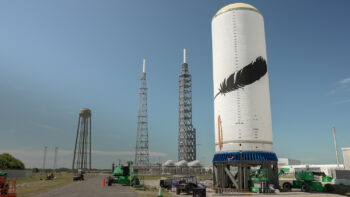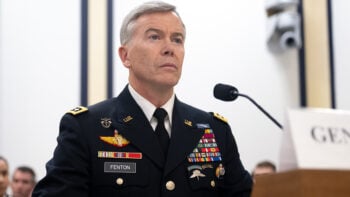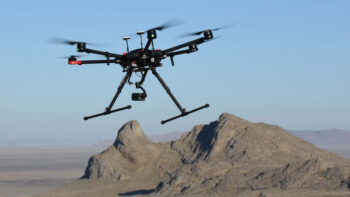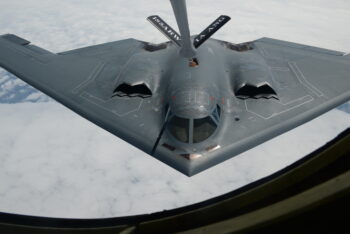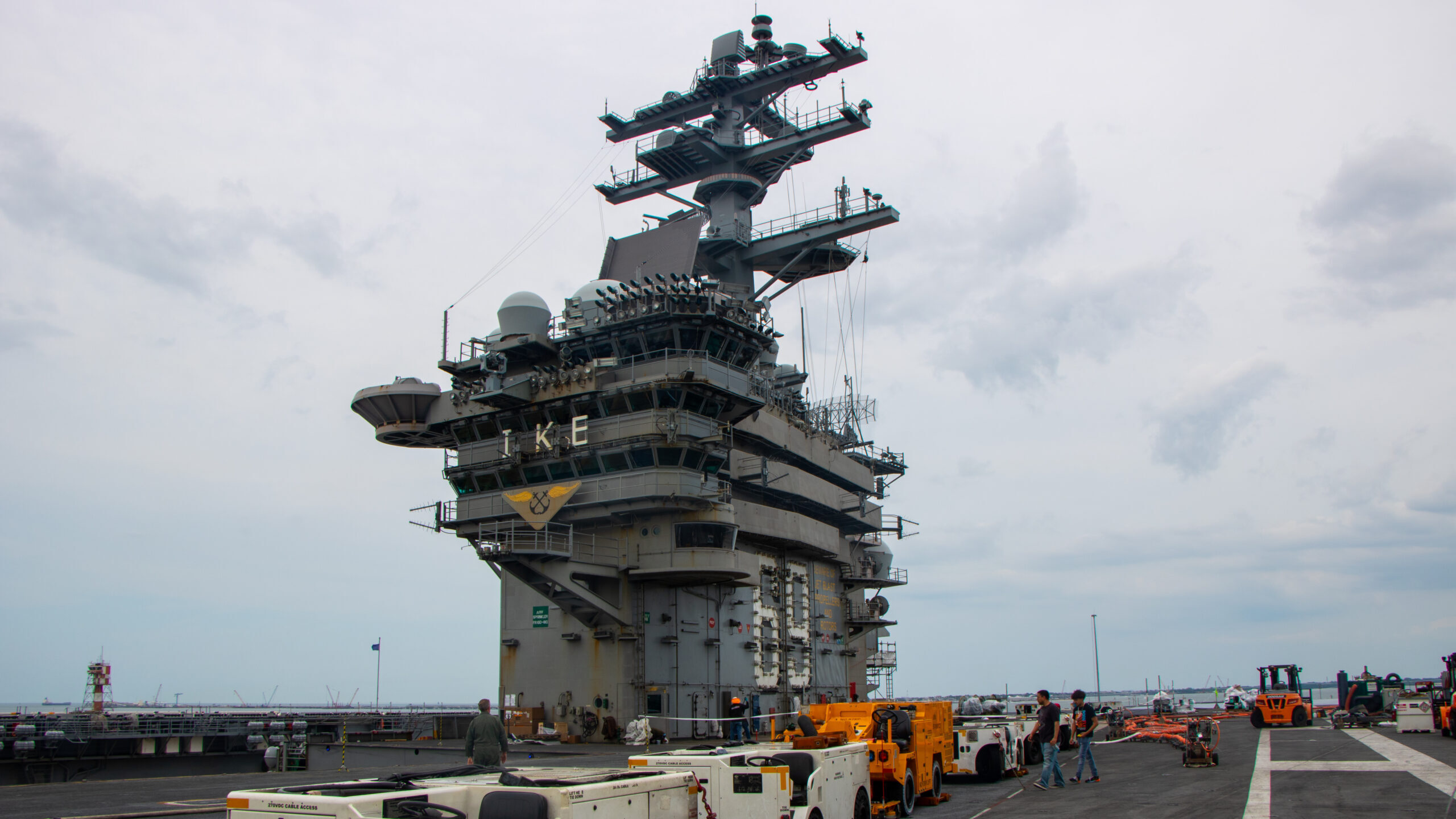
The aircraft carrier Dwight D. Eisenhower participated in Large Scale Exercise 2023 using Live, Virtual and Constructive training technology while docked in Norfolk, Va. (Justin Katz/Breaking Defense)
Editor’s Note: This is the second in a series of stories about the US Navy and Marine Corps’ Large Scale Exercise 2023. The services provided Breaking Defense and other reporters an up close and personal look into how they are executing their biggest — and exclusively naval — training exercise.
ABOARD THE USS DWIGHT D. EISENHOWER (CVN-69) — Inside the combat information center of this aircraft carrier, a handful of Navy officers and their senior chief were all focused on monitoring the waters of the Mediterranean, the vast expanse ranging from the coast of Italy to the shores of several African nations. A map of the area was posted on the shared screens at the front of the room.
As the crew later described it, that map and individual consoles were filled with information tracking myriad surface and aviation assets, friendly and hostile. In such a scenario, each officer is assigned to monitor for different entities while the chief continually updates and organizes the incoming information to keep the admiral in charge of the carrier strike group informed during any given situation in the Navy’s 6th Fleet area of responsibility.
But there’s a catch: If the officers or chief went above deck, they would not have seen the shores of any European or African countries. Instead, they’d be greeted by the aircraft carrier George H.W. Bush (CVN-77) and the amphibious assault ship Wasp (LHD-1) docked on either side of them at Naval Station Norfolk in Virginia. The ship wasn’t operating in the Mediterranean, it was sitting back home in the US, participating in Large Scale Exercise 2023, the Navy and Marine Corps’ largest service-only exercise and one that spans the globe, physically and virtually.
That the ship’s crew can train as though they’re off the coast of Naples, Italy, while being just a short drive away from the headquarters of US Fleet Forces Command in the states is through the power of modern training technology dubbed “Live, Virtual and Constructive training,” a core capability of Large Scale Exercise 2023.
LVC plays an integral role in allowing ships, such as the Eisenhower, to participate in evolutions actually taking place with real ships anywhere else in the world. For their part, the crew aboard the ship, including the one-star admiral in command of the carrier strike group, said the difference between the modern training simulation and what they would see in live conflict are nearly indistinguishable.
“It’s probably one of the most dynamic and most [stressful] situations that we put our watchstanders through and our aircrew through,” Rear Adm. Marc Miguez, commander of Carrier Strike Group 2, said of using LVC technology. Watchstanders refers to various members of the crew monitoring the ship’s surrounding environment.
For this specific part of the exercise, the Navy used the virtual environment to allow the Eisenhower’s crew to react to combat developments as it would it if were halfway around the world and part of a complex, multi-ship US operation.
“We actually simulate in the training environment us being shot at by threat aircraft, threat ships and … cruise missile defense threats that we could incur if we go into a combat operation once we deploy,” he told reporters while standing on the ship’s (real) flight deck.
The Eisenhower, affectionately called “Ike” by the service in a throwback to its namesake’s nickname when he campaigned to become the country’s 34th president, is the flagship for Miguez’s carrier strike group. As the admiral spoke, machinery could be seen and heard in the background reapplying the non-skid coating material used to help aircraft maintain traction on the flight deck. Elsewhere, crews were doing “HM&E” work, a short name the service uses for a wide variety of tasks associated with the “hull, mechanical and electrical” systems.
Despite being in the midst of a major exercise, the Ike was also going through its usual maintenance, but, crucially, the combat systems required to connect to the LVC training environment were left running.
“They’re available to us. And what we do is we plug into that virtual network… This carrier is teleported into the 6th Fleet AOR for the Large Scale Exercise,” said Migeuz. “It’s very impactful to allow our watchstanders, even though we’re tied up to the pier and we’re in this maintenance [period] right now, but they still get to do all the watchstanding duties that they would normally do if we were underway.”
Back down in the combat information center, where the monitors were blacked out upon the reporters’ arrival due to operational security concerns, the crew joked that the senior chief has spent more time in this room than anywhere else on the ship. The reason, they said, is it largely falls to him to manage what the admiral and the watchstanders are seeing on the consoles displaying surface and aviation contacts.
Whether those consoles are displaying elements of the Gerald R. Ford Carrier Strike Group, which really was operating in the 6th Fleet AOR while reporters were at Norfolk, or simulated aircraft that may have been “injected” by exercise staff back at US Fleet Forces headquarters, the training technology doesn’t allow the crew to tell the difference.
“We can literally see their tracks as we’re in the virtual environment next to them,” adds Migeuz, referring to the Ford’s strike group. “Which is kind of neat, but we would not do anything different than what we’re doing now.”
That the admiral, watchstanders and senior chief are virtually operating in the Mediterranean is not random either. They’ll have an opportunity to see how the virtual training compares to real operations when they actually deploy on operations later this year to both 6th and 5th Fleet’s areas of responsibility.
















